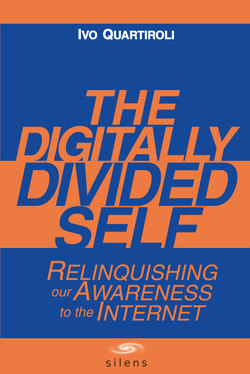Читать книгу The Digitally Divided Self: Relinquishing our Awareness to the Internet - Ivo Ph.D. Quartiroli - Страница 25
На сайте Литреса книга снята с продажи.
Knowing through the Heart
ОглавлениеThe mind is the generally acknowledged organ of thoughts, but is not the only cognitive modality. There is another way, through the heart, that doesn’t just deal with emotions, but has to do with the search for truth and with a direct way of knowing. The knowing heart has been considered by spiritual traditions as receptive to the intelligence of Universal Consciousness.
This spiritual heart has a connection with the body in energetic terms. The heart chakra, for instance, is located in the chest area. Even if the energetic connection is considered unscientific, it has been discovered that the physical heart has its own nerve cells which also send information to the brain.
With the discovery that the heart has its own dedicated nervous system, the Institute of HeartMath is researching the critical links between emotions, the heart-brain communication, and cognitive functions. In the article “Science of the Heart” (2001), they reported that the heart is the organ that produces the largest electrical field, about 60 times greater than the brain. An electrocardiograph (ECG) can detect it anywhere on the surface of the body. Also, the magnetic field of the heart is more than 5,000 times greater than that of the brain and can be detected several feet away, in any direction, using SQUID-based magnetometers. Perhaps further research will reveal that the neurophysiology of the heart is the physical counterpart of our capacities for subtle knowing.
The heart can be a cognitive tool wider and deeper than the mind. The heart’s modalities of knowing don’t come through splitting and reasoning, but in an intuitive and receptive way. A mind emptied of its conditionings and beliefs gives space to the heart’s cognitive faculties.
If the mind works with an either/or – or 0/1 – binary duality, the cognitive map of the heart works with a both/and logic, connecting what the mind has separated – including ourself as an individual separate from the rest of existence. The state of spiritual enlightenment in some traditions is referred to as non-dual, suggesting the end of the dualities of the mind.
How do we connect with the spiritual heart? Experientially through love, as one would imagine – but the love of a special lover. A. H. Almaas (1988) perceived that one basic quality of the soul is the love of truth for its own sake, love being the expression of truth. Just as the mental quality of objectivity necessitates love of truth – a quality of the heart – there is an interrelationship between the many qualities of the head and the heart.
The genesis of ego is defensiveness – which is a way of coping with and concealing experience that is difficult to tolerate. Thus the basic quality required for inner realization is the polar opposite of this fundamental aspect of ego. Defense and resistance are detrimental to truth, while love is supportive. Love of truth allows defensiveness to disappear and can reveal the sort of experiences that were initially defended against to establish the pattern of resistance.
The primary split that created the ego and, with it, dualistic mind, occurred at a very early age in reaction to intolerable pain, as we split good feelings from bad ones. That first illusion was the first virtual reality “software.” It was a necessary, human and unavoidable act that shapes everyone’s life. Nonetheless, it is still an illusion that can be exposed and dissolved through the love of truth in order to regain wholeness.
While the mind can give a great deal of support in working toward the truth, at a certain depth it is powerless, since its very existence depends on hiding the truth. For the mind, exposing truth would be committing suicide. Yet the heart loves to reveal the layers of truth which the mind cannot investigate.
Rudolf Steiner (1991) also pointed to the unrecognized cognitive faculties of the heart. He regarded the capacity for love as the third step in higher knowledge, indispensable for rising to the level of intuition. This can be achieved only by refining and spiritualizing the capacity for love to its acme, though this is not accepted as a cognitional force in our materialistic age. A person must be able to evolve sufficiently to make this capacity for love a cognitional force.
The birth of the dual mind is a necessary part of the development of our soul. In order to recognize ourself, we need to differentiate ourself from others and to become individual personalities. In the more advanced stages of spiritual development, the dualistic mind is transcended along with the individual personality. Osho (2008) offers this perspective:
Existence is undivided; all divisions are just mental. The very way the mind looks at things creates a duality. It is the prison of the mind that divides. [The] mind cannot do otherwise. It is difficult for the mind to conceive of two contradictions as one, of opposite polarities as one. The mind has a compulsion, an obsession to be consistent. It cannot conceive how light and darkness are one.
And Assagioli (1971), the father of psychosynthesis, expressed it this way:
Often we can’t say where actually a person starts and where another ends. In harmonious groups, in an organized collectivity, the limits of the self, of the personalities of their members, tend to flow away, they aren’t clearly distinct. We are literally immersed in a psychic atmosphere, in a collective psyche with its various differentiations (p. 18).
Through duality we lose the intimate connection with wholeness, but acquire powerful mental capacities unknown in other species. Discriminating awareness allows us to define a well-separated ego personality, intervene on external matter, and build sophisticated tools.
